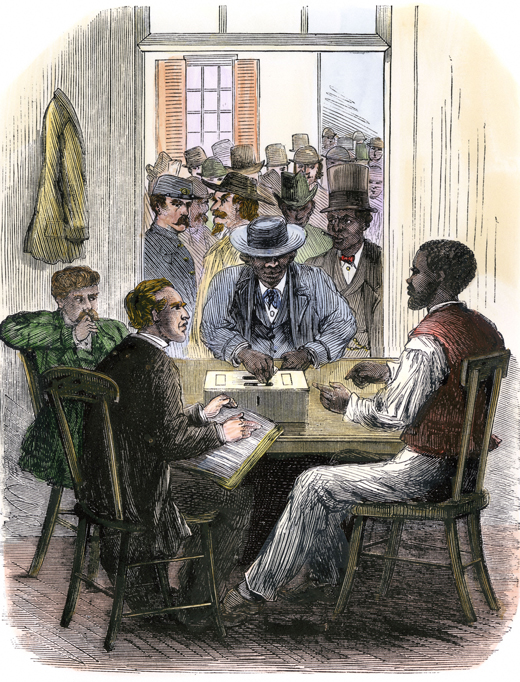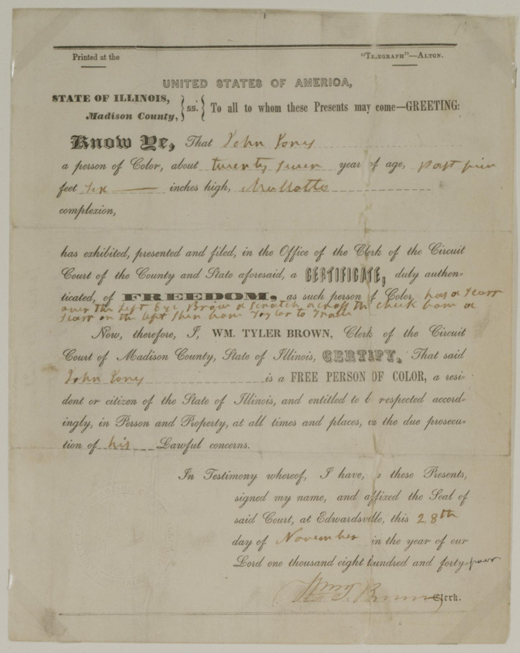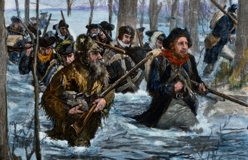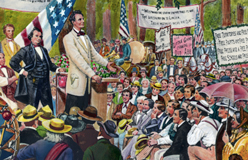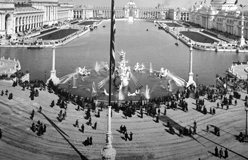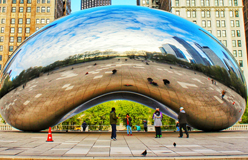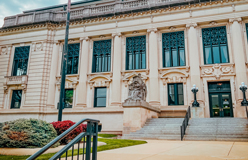The early 1800s was a tumultuous time in Illinois and the United States.
It was a time of war, of controversy, and of conflict, but it was also a time of growth and celebration. Those years may seem like a long time ago; however, today we still feel the echoes of events that took place then.
On June 18, 1812, the United States was again at war with Britain. Indigenous peoples of the region took the side of the British, because they thought that if the British won, they would force settlers off their land. Fort Dearborn, in what is now Chicago, was the site of a battle between the Potawatomi and U.S. soldiers. The battle lasted about 15 minutes. It was a total victory for the Potawatomi, who burned the fort to the ground. One consequence was that the conflict gave the U.S. government a rationale for removing Indigenous peoples from the region. ▶
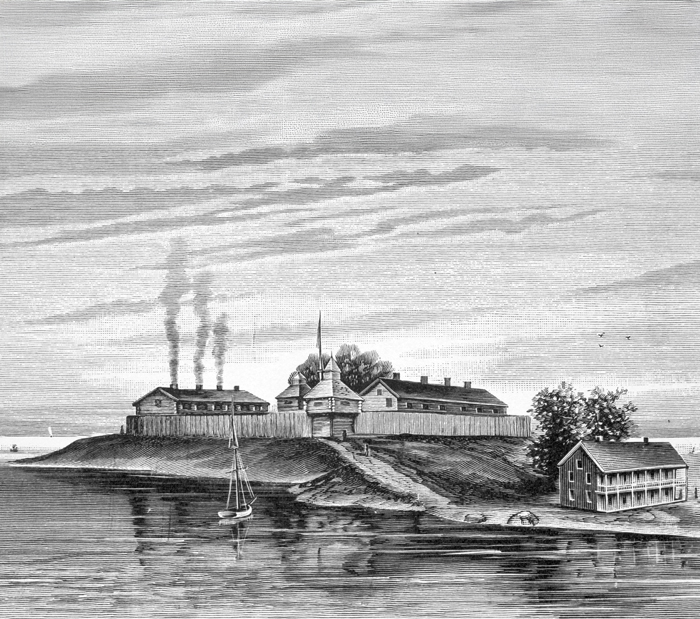
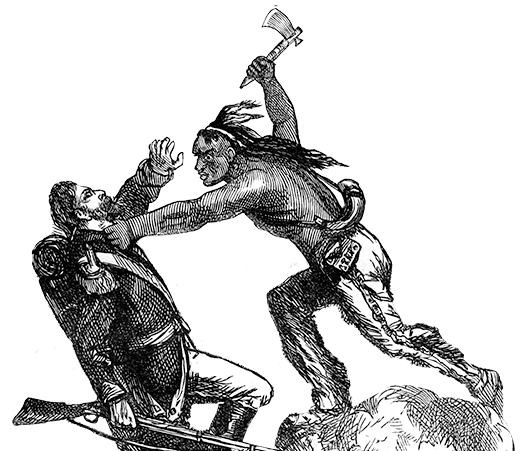
Reflection
Some called it the Battle at Fort Dearborn, but to others it was the Fort Dearborn Massacre. Consider these two names. How might they reflect the point of view of the person using them?
Illinois was brought into the United States as a free state, a state in which slavery was banned. Despite being a free state, free Black people were still denied basic freedoms. In 1819, that reality was codified in what became known as the Black Codes. According to the codes, Black people could not vote, and they could be jailed or beaten if they gathered in groups of three or more. Moreover, they had to carry a Certificate of Freedom to show they were not enslaved. ▶
Check It Out!
How did the Black Codes of 1819 compare to the Black Laws passed in 1853?
The 1819 law controlled Black people already living in Illinois, but the 1853 law was stricter because it tried to keep Black people out of the state by banning them from even migrating to Illinois. People who disobeyed the law could be fined, or put into forced labor, or sold.
In 1830, the U.S. government passed the Indian Removal Act, which forced Indigenous peoples to leave their lands in the east and move west of the Mississippi River. The law created many conflicts. The Black Hawk War was one of them. Black Hawk was war chief of the Sauk tribe who had been forced to leave Illinois. In 1832, he and about 1,000 others returned to reclaim their land. They had no chance of winning against thousands of U.S. soldiers and were again forced to leave. ▶
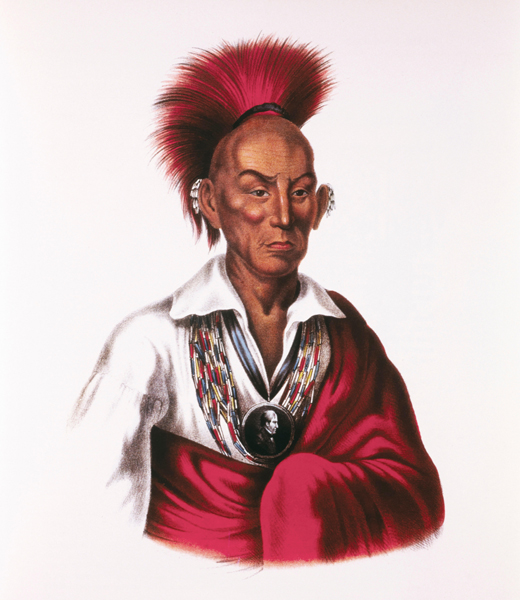

Reflection
Reflect on the Black Hawk War from the point of view of each side. How might the conflict have ended differently?
Rich soil drew pioneers from southern states to the prairies of Illinois. Improved transportation drew people to northern Illinois, especially Chicago. On the southern edge of Lake Michigan, Chicago had the best port in the region. Plus, there was the possibility that the Chicago River could be made to connect to the Illinois River and then to the Mississippi and the Atlantic Ocean. Getting goods to market would be easy, so it’s no wonder the population grew quickly – from 300 in 1833 to more than 300,000 in less than 40 years. ▶
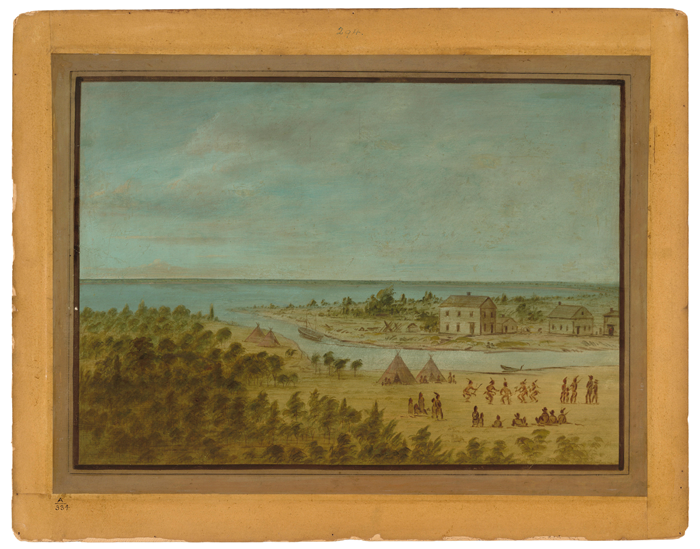

▲ The Illinois and Michigan Canal was a 96-mile “ditch” that connected the Great Lakes to the Illinois and Mississippi Rivers. Completed in 1848, it meant that people – and goods – could travel from the eastern U.S. all the way to Chicago (and beyond) by water. Using the canal was faster and cheaper than taking the overland route.
Check It Out!
How did the Illinois and Michigan Canal affect Chicago?
After the canal opened, Chicago boomed. The first railroad came to the city. The first telegraph line opened. And goods from the South, like sugar, salt, and oranges, arrived. Chicago was now the “greatest” city of the American heartland.
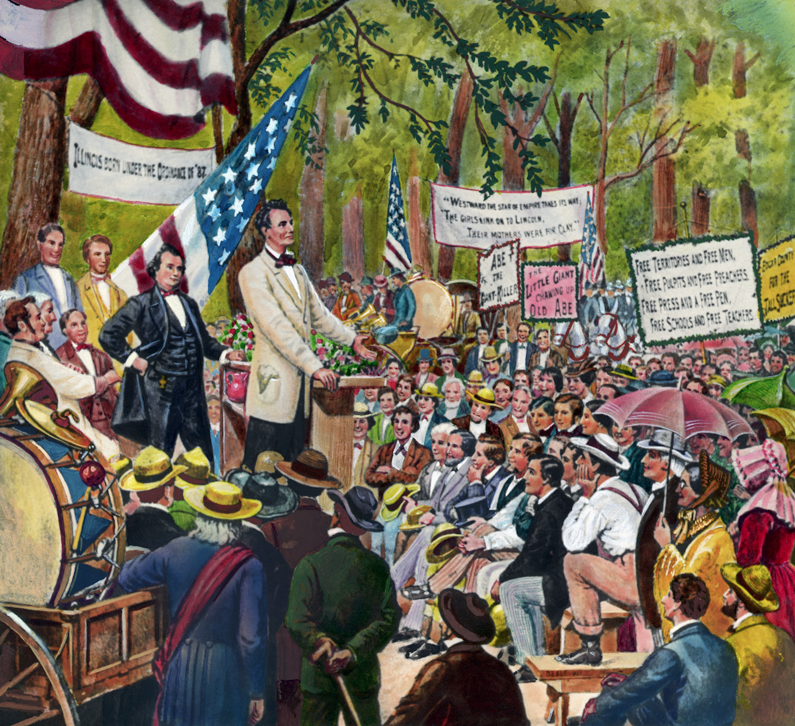
◀ The year was 1858. Stephen Douglas and Abraham Lincoln both campaigned to be the U.S. senator from Illinois. In the months before the election, they took part in seven debates. Slavery was the main topic. Douglas said that each state should decide for itself whether or not to allow slavery. Lincoln’s view was that slavery should not spread to new states or territories at all. Douglas won the debates, but they set Lincoln on a path to becoming president two years later. Shown here is Lincoln speaking at one of the debates.

A large crowd gathered at the U.S. Capitol for Lincoln’s inauguration in January 1861.
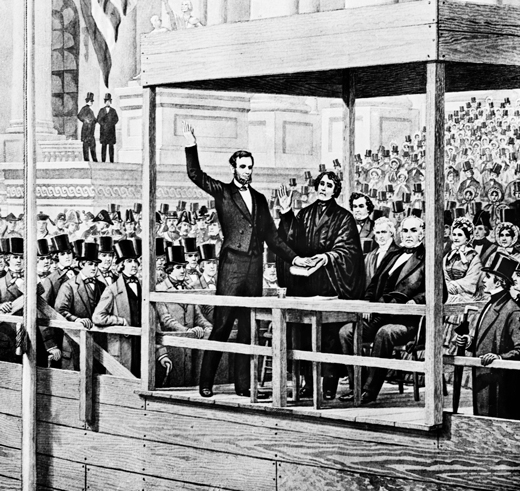
Lincoln being sworn in as our 16th president.
▲ In 1860, when Abraham Lincoln was elected president of the United States, White people in the South became fearful because they thought Lincoln would try to stop slavery everywhere. South Carolina left the Union weeks after the election. (The Union was made up of states that remained loyal to the United States government.) A few months later, six other states left. By April 1861, 11 states had broken away and formed a new country they called the Confederate States of America. Civil War could not be avoided.
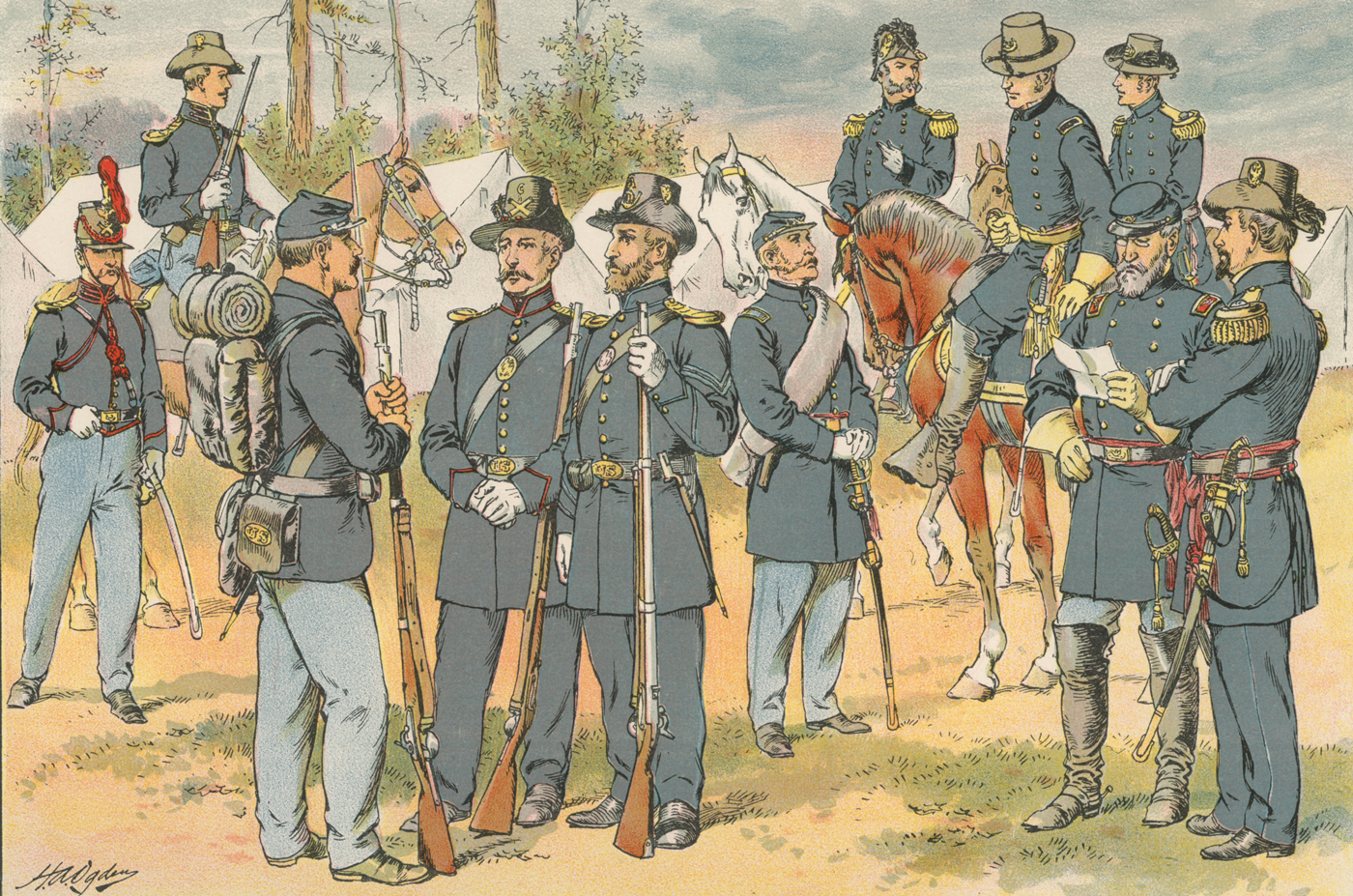
Cairo, in southern Illinois, was a staging area for the war. Located where the Ohio and Mississippi Rivers meet, it became a supply center and a training ground. Union soldiers from Chicago arrived, as did Pro-Union people from Kentucky. A writer for the local newspaper said this: “The town is full of strangers, and newspaper correspondents are almost as plentiful as soldiers.” Still, there were those on the side of the South. ▶
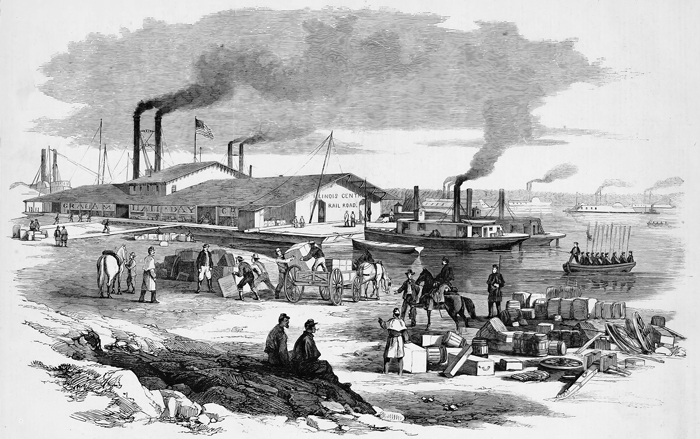

◀ People in the Democratic Party were against the war, including a group known as the Copperheads. The name Copperhead refers to a snake known to attack without warning. The Copperheads were popular in Illinois as well as in Indiana and Ohio. They opposed just about everything Lincoln stood for, and many used violence to show their views.
The Civil War ended on April 9, 1865, and the country was whole again, but five days later, President Lincoln was assassinated. The process of healing the country fell to Lincoln’s vice president, Andrew Johnson. During this period, known as Reconstruction, many Black people moved to Chicago. Black men got the vote, and the Black Laws in Illinois were abolished. Johnson, however, was sympathetic to the South and allowed southern states to set up their own “black codes.” ▶
